
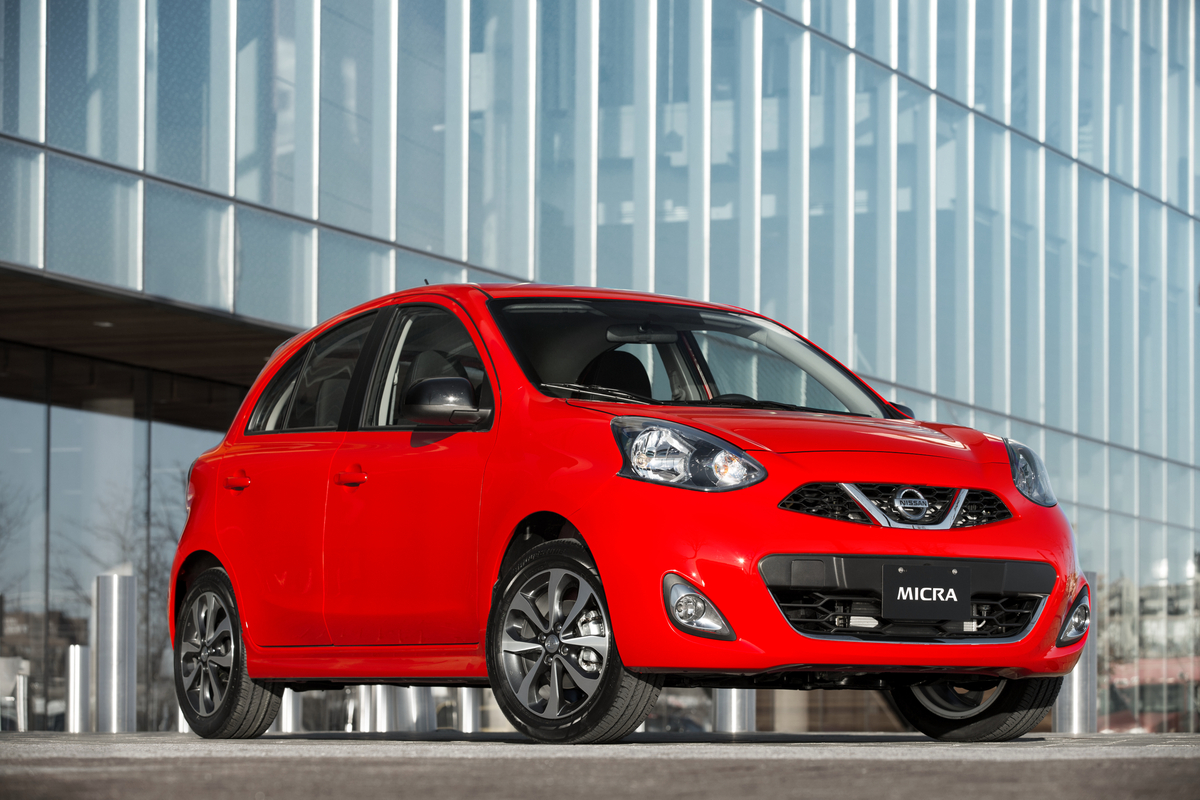 The first generation Nissan Micra (also known as the K10) was first introduced to us back in the early nineteen eighties and Canadian sales of the K10 ended in 1991.Â
The first generation Nissan Micra (also known as the K10) was first introduced to us back in the early nineteen eighties and Canadian sales of the K10 ended in 1991. 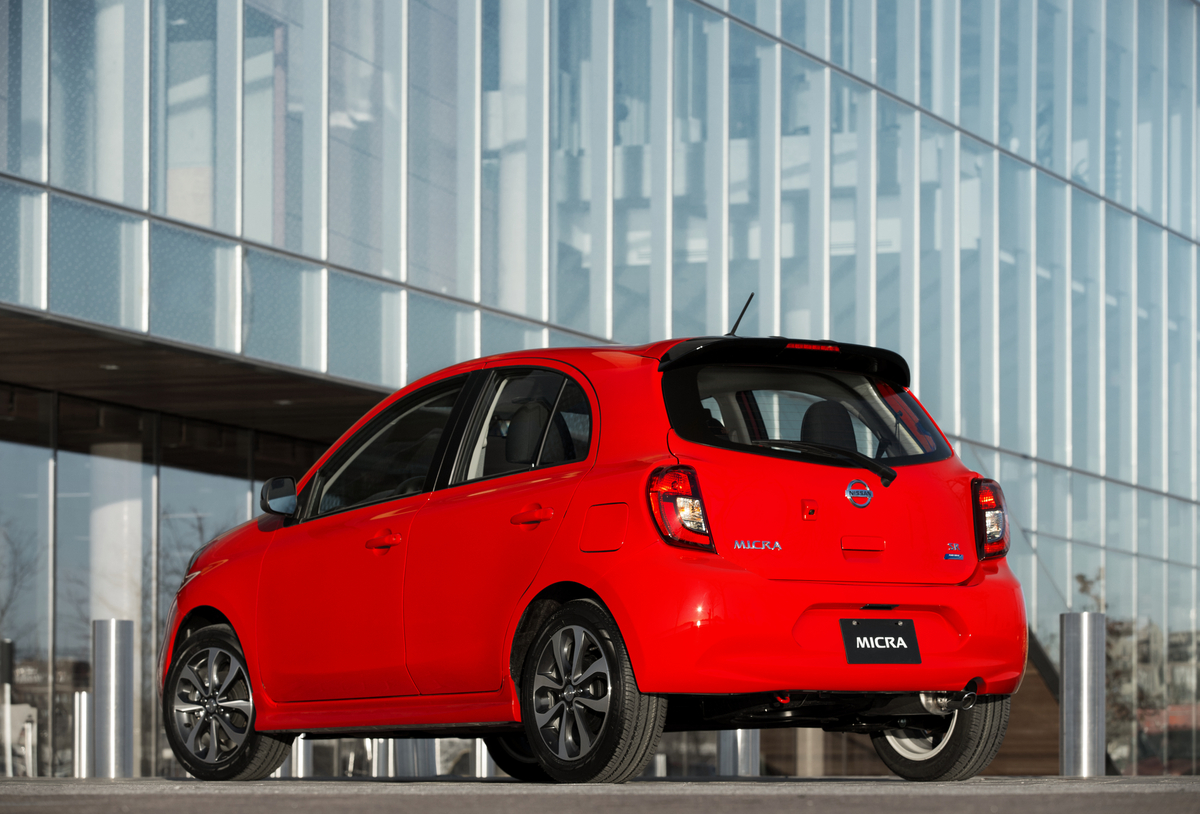 The one and only engine is a compact and lightweight DOHC 1.6-litre 4-cylinder that features dual fuel injection and Continuously Variable Timing Control systems, in order to increase power and fuel efficiency. So, not only is Micra inexpensive to buy, it’s also inexpensive to run. Combined city/highway fuel consumption is rated at 7.9 L/100km, and 8.0L/100km with the automatic transmission. So, its total average annual fuel bill is estimated to be $2,080.
The one and only engine is a compact and lightweight DOHC 1.6-litre 4-cylinder that features dual fuel injection and Continuously Variable Timing Control systems, in order to increase power and fuel efficiency. So, not only is Micra inexpensive to buy, it’s also inexpensive to run. Combined city/highway fuel consumption is rated at 7.9 L/100km, and 8.0L/100km with the automatic transmission. So, its total average annual fuel bill is estimated to be $2,080.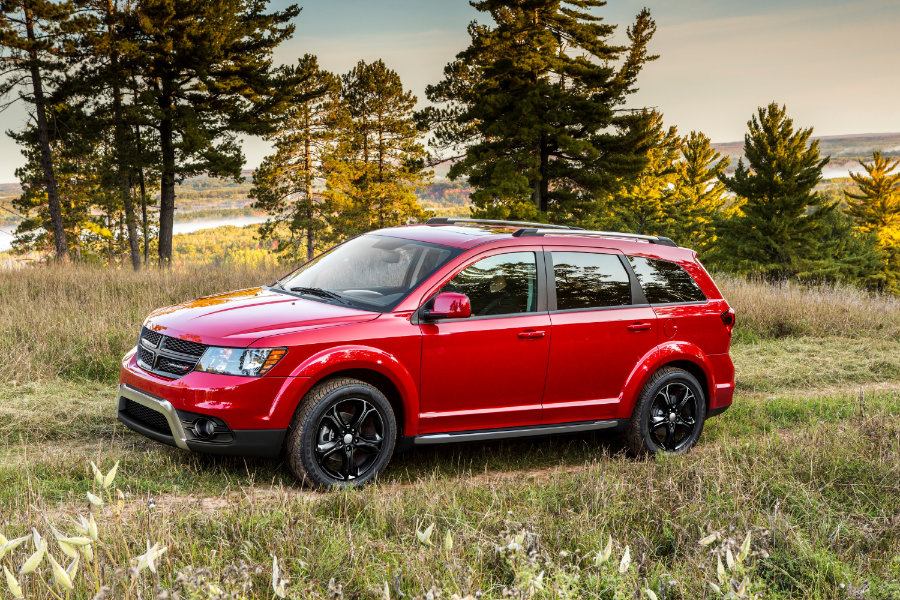 The Dodge Journey is a long serving and highly versatile crossover utility vehicle (2009-2020). It features three rows of seating for up to seven passengers, and has been around since 2009. Just two editions, Canadian Value Package and Crossroad, were marketed for the recent model year, which is a good indicator that the end of this Journey is near.  

The Dodge Journey is a long serving and highly versatile crossover utility vehicle (2009-2020). It features three rows of seating for up to seven passengers, and has been around since 2009. Just two editions, Canadian Value Package and Crossroad, were marketed for the recent model year, which is a good indicator that the end of this Journey is near.  
 Dodge Journey is also not lacking in terms of passenger safety and security, with more than 40 features available. These include multistage front passenger air bags, active head restraints, electronic stability control with all-speed traction control, electronic roll mitigation and Brake Assist, driver-side knee blocker air bag, side-curtain air bags covering all three rows, front seat-mounted side air bags, LATCH child seat anchor system and trailer-sway control.

Dodge Journey is also not lacking in terms of passenger safety and security, with more than 40 features available. These include multistage front passenger air bags, active head restraints, electronic stability control with all-speed traction control, electronic roll mitigation and Brake Assist, driver-side knee blocker air bag, side-curtain air bags covering all three rows, front seat-mounted side air bags, LATCH child seat anchor system and trailer-sway control.
 I walked in front of the truck for a few metres and up popped a giant Black bear from the tall grass. It must have towered seven-feet. Maybe that’s two metres in metric. As I was in the fishing mood maybe I was already in the traditional fish-catch exaggeration mode but who cares? - It looked darned big to me.Â
I walked in front of the truck for a few metres and up popped a giant Black bear from the tall grass. It must have towered seven-feet. Maybe that’s two metres in metric. As I was in the fishing mood maybe I was already in the traditional fish-catch exaggeration mode but who cares? - It looked darned big to me. 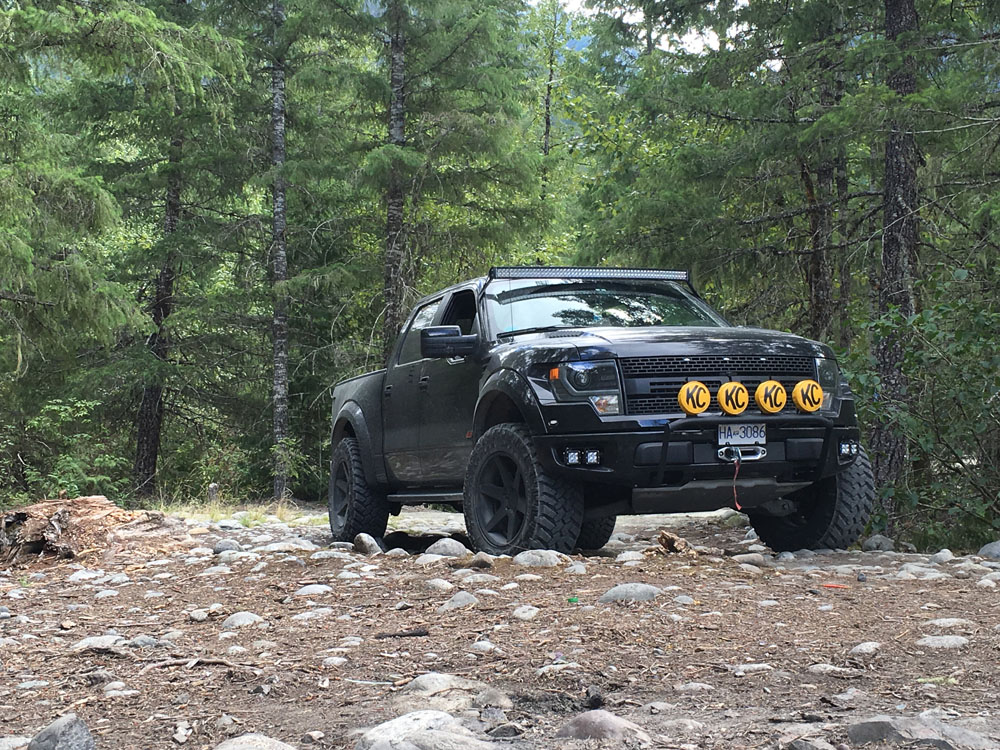
 1973-1979 Honda Civic: The Honda Civic was introduced during the OPEC oil crisis, first as a two-door and then a three-door hatchback. The transversely mounted (similar to the Mini) 1169 cc engine driving the front-wheels was very peppy and spacious. The Civic was similar to other “Made in Japan†items and considered a throwaway automobile, and that is exactly what happened to most of them. Rust helped speed up the process also. If you can find a pristine, rust-free example, wrap it in cotton wool, it won’t command over $1 million as some Toyota 200GTs have recently but it will increase in value as time goes by.
1973-1979 Honda Civic: The Honda Civic was introduced during the OPEC oil crisis, first as a two-door and then a three-door hatchback. The transversely mounted (similar to the Mini) 1169 cc engine driving the front-wheels was very peppy and spacious. The Civic was similar to other “Made in Japan†items and considered a throwaway automobile, and that is exactly what happened to most of them. Rust helped speed up the process also. If you can find a pristine, rust-free example, wrap it in cotton wool, it won’t command over $1 million as some Toyota 200GTs have recently but it will increase in value as time goes by.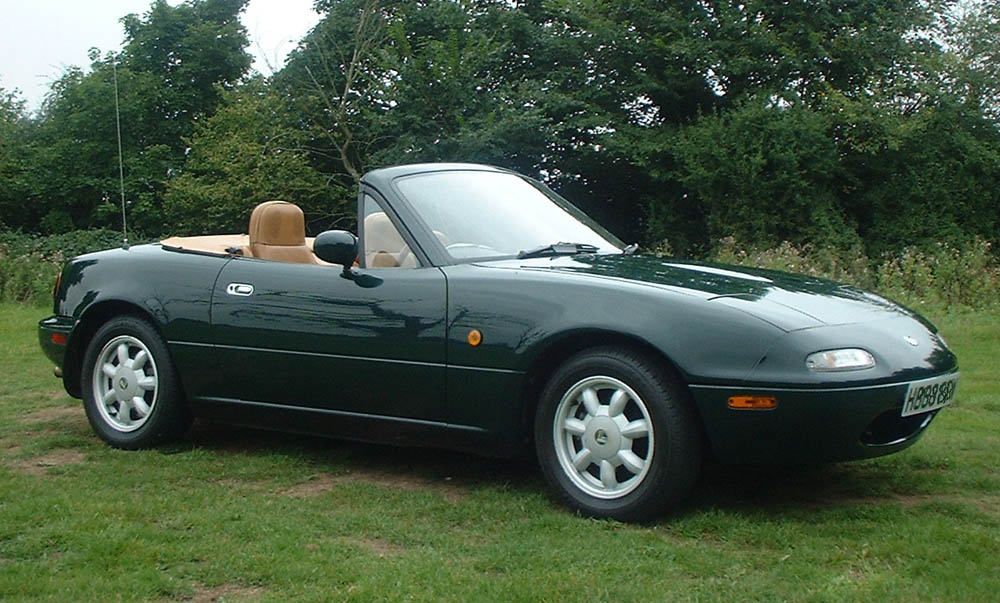 1990-1999 Mazda Miata: Introduced in May of 1989, the Miata is considered the Japanese Lotus Elan. Unlike the thoroughbred and somewhat finicky Lotus engine, the Miata’s four-cylinder, twin-cam, four-valves-per cylinder engine is very reliable. In an eight-year production run, 430,000 first-generation Miatas were built. This rock-solid, rear-wheel-drive sports car does not rattle or shake like most convertibles. The soft top can be raised and lowered effortlessly with just one hand. The Japanese engineers tried out more than 100 different exhaust systems until they achieved the sound they desired to make it sound like a British sports car.
1990-1999 Mazda Miata: Introduced in May of 1989, the Miata is considered the Japanese Lotus Elan. Unlike the thoroughbred and somewhat finicky Lotus engine, the Miata’s four-cylinder, twin-cam, four-valves-per cylinder engine is very reliable. In an eight-year production run, 430,000 first-generation Miatas were built. This rock-solid, rear-wheel-drive sports car does not rattle or shake like most convertibles. The soft top can be raised and lowered effortlessly with just one hand. The Japanese engineers tried out more than 100 different exhaust systems until they achieved the sound they desired to make it sound like a British sports car.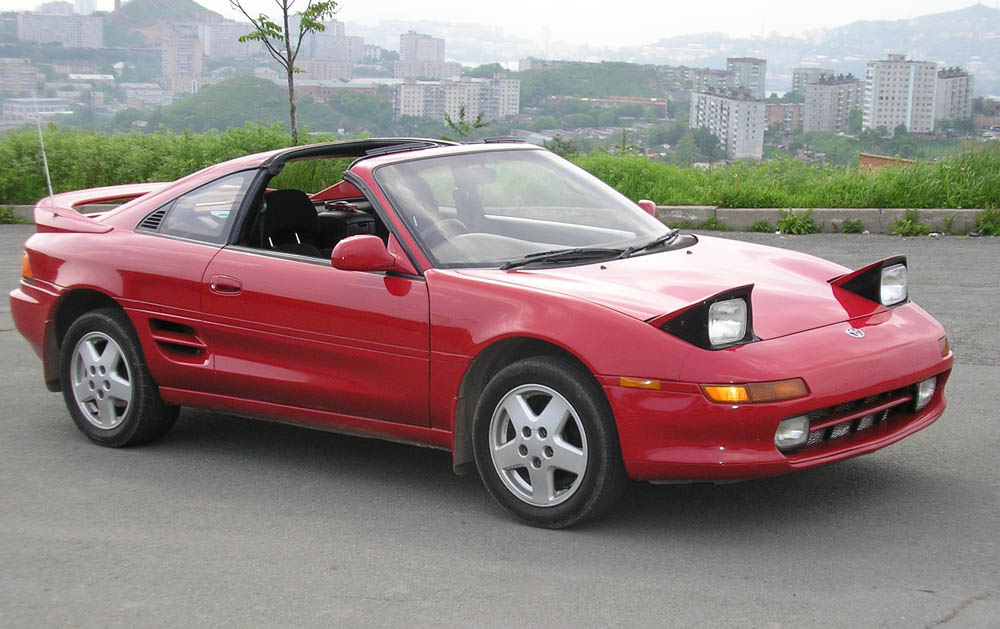 1990-1999 Toyota MR2: The second generation MR2 was larger and weighed (160 to 180 kg) more than its square predecessor. The body styling was now much more streamlined; if you use your imagination, it has a resemblance to both the Ferrari 348 and the Ferrari F355. Because of this, the new MR2 was labeled by some as “The poor man’s Ferrariâ€. If you purchase the turbocharged version (mid-to-high 30s), you might feel like you are driving a Ferrari!
1990-1999 Toyota MR2: The second generation MR2 was larger and weighed (160 to 180 kg) more than its square predecessor. The body styling was now much more streamlined; if you use your imagination, it has a resemblance to both the Ferrari 348 and the Ferrari F355. Because of this, the new MR2 was labeled by some as “The poor man’s Ferrariâ€. If you purchase the turbocharged version (mid-to-high 30s), you might feel like you are driving a Ferrari!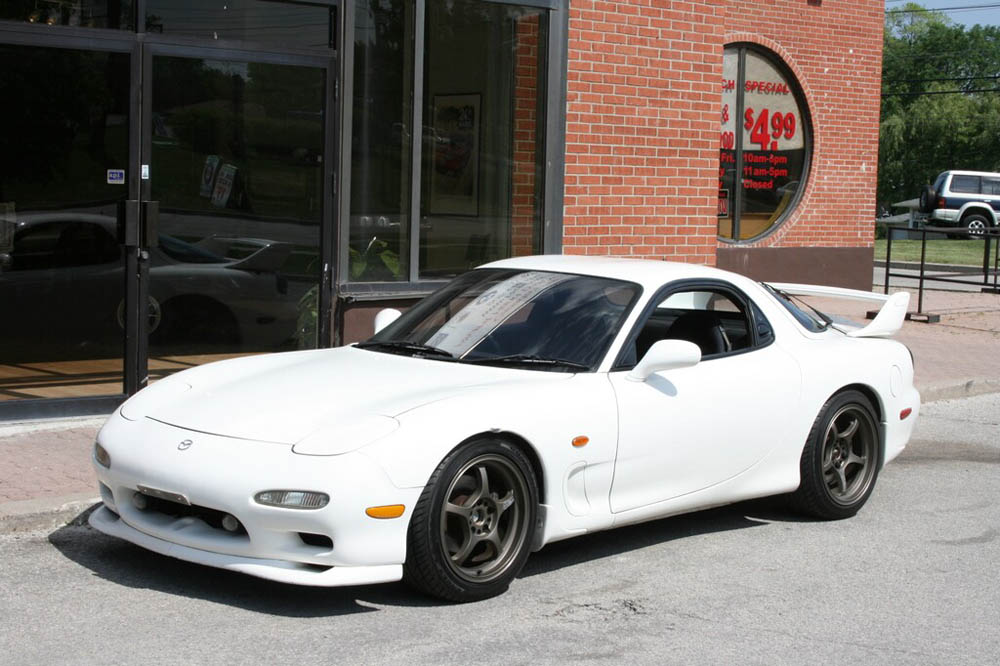 1993-1995 Mazda RX-7: The twin sequential turbocharged RX-7 is a model that has generally been overlooked by many. The 1.3-litre Wankel engine screams and behaves like a motorcycle with its 8,000 rpm red-line. With 255hp it is a sports car without compromise, unfortunately also not many buyers! Mazda had priced this model out of the market. If you can find a mechanic familiar with rotary engines and want to have some fun, this is the model to consider, definitely one-step up from the Miata.
1993-1995 Mazda RX-7: The twin sequential turbocharged RX-7 is a model that has generally been overlooked by many. The 1.3-litre Wankel engine screams and behaves like a motorcycle with its 8,000 rpm red-line. With 255hp it is a sports car without compromise, unfortunately also not many buyers! Mazda had priced this model out of the market. If you can find a mechanic familiar with rotary engines and want to have some fun, this is the model to consider, definitely one-step up from the Miata.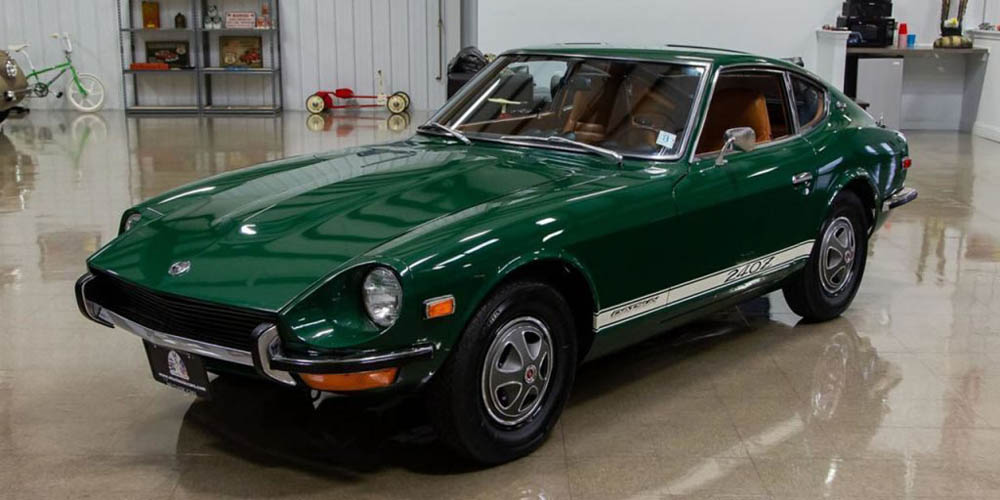 1971-1973 Datsun 240Z: An early Datsun 240Z or event a 260Z from a dry climate such as California or Arizona, one that you can still see and count the spot welds on the quarter panel rear wheel arches is a car to snap up. These Ferrari 275 GTB lookalikes have a magnificent overhead-cam, straight six-cylinder engine and independent rear suspension. Consequently, they are fast and handle very well. Parts are also still readily available.
1971-1973 Datsun 240Z: An early Datsun 240Z or event a 260Z from a dry climate such as California or Arizona, one that you can still see and count the spot welds on the quarter panel rear wheel arches is a car to snap up. These Ferrari 275 GTB lookalikes have a magnificent overhead-cam, straight six-cylinder engine and independent rear suspension. Consequently, they are fast and handle very well. Parts are also still readily available.